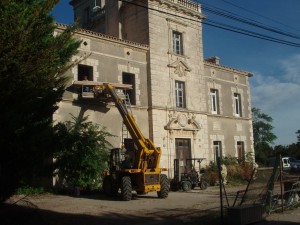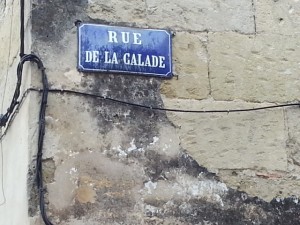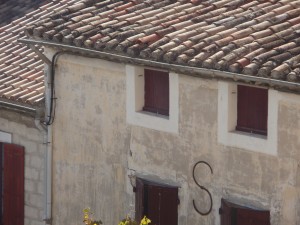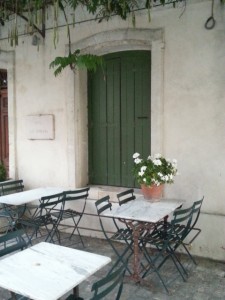 The Camargue is a particular place, not like the rest of France. Black bulls, the Guardien cowboys, white horses and flamingos are its usp. As well as mosquitoes and the violent Mistral blowing down the Rhone valley.
The Camargue is a particular place, not like the rest of France. Black bulls, the Guardien cowboys, white horses and flamingos are its usp. As well as mosquitoes and the violent Mistral blowing down the Rhone valley.
Our gite was in Montcalm, a hamlet with an 18th century chateau surrounded by vineyards. In the 19th century, with phylloxera devastating vines across Provence, affluent wine producers from Marseilles moved their attention to the sandy, disease free, soil of the Camargue. Louis Prat, of the Noilly Prat family, established his business in the chateau at Montcalm. The gite was in the old stable block opposite the chateau. After Louis Prat’s death in the 1930’s the chateau fell into ruin. But recent owners were restoring it, and a new roof of terracotta tiles was almost complete. Each morning, we  breakfasted out in the cobbled courtyard (the local boulanger left croissants and baguettes in a box for us) and watched the precarious activity at roof level and the balletic moves of the fork lift truck with its extendable arm. At night, in the central part of the chateau, chandeliers glowed through the window panes. Madame at the gite told me that the chandeliers were actually fashioned from many odd pieces of glass and this and that, but they looked wonderful. The wine harvest had started late that year and road signs announced “Danger sur 10km. Vendanges”. Each evening the harvesting machinery rattled past our window and worked through the night in the vines all around us.
breakfasted out in the cobbled courtyard (the local boulanger left croissants and baguettes in a box for us) and watched the precarious activity at roof level and the balletic moves of the fork lift truck with its extendable arm. At night, in the central part of the chateau, chandeliers glowed through the window panes. Madame at the gite told me that the chandeliers were actually fashioned from many odd pieces of glass and this and that, but they looked wonderful. The wine harvest had started late that year and road signs announced “Danger sur 10km. Vendanges”. Each evening the harvesting machinery rattled past our window and worked through the night in the vines all around us.
A dear friend, Liz, arrived for a few days. She wanted to come to one of the big dealer markets, but declined the invitation to a local Brocante the following morning. It was dark at 6.30am as I drove off and the harvesters were still working in the vineyards. There were spills of black grapes and slicks of juice at most roundabouts on the way. But I could find no sign of a market at Aigues-Mortes. A boulangerie was mercifully open and brightly lit in the dark morning, and Madame said, yes the market should be on the avenue under the plane trees.
One man eventually began unloading a van. A couple of others, hands in their blousons, slouched up and down. Another car arrived. I waited some more. The street sweeper, scraping leaves with his plastic rake was filling the first municipal bags of autumn. I sat a while on a bench where men played boules by day. A car with windows down and Claude Francois playing loudly slalomed around the central row of plane trees and pulled up abruptly to buy a paper. Better, I thought, to use my time walking in the medieval town and to enjoy it at its most


 uncrowded. We’d been there the previous day to walk the magnificent ramparts and gaze down onto terracotta roofs and courtyards. We’d had a quick lunch outside in a narrow street. Graham and Liz grinned as we’d got up to go – I’d been sitting with my back to a small brocante all the while. But Madame in the brocante was seriously tourist weary at the end of the season, and barely raising an eye as I walked in. Her taste was too trinkety for me anyway. When I asked if there were other shops open in the town and she vaguely gestured somewhere behind her.
uncrowded. We’d been there the previous day to walk the magnificent ramparts and gaze down onto terracotta roofs and courtyards. We’d had a quick lunch outside in a narrow street. Graham and Liz grinned as we’d got up to go – I’d been sitting with my back to a small brocante all the while. But Madame in the brocante was seriously tourist weary at the end of the season, and barely raising an eye as I walked in. Her taste was too trinkety for me anyway. When I asked if there were other shops open in the town and she vaguely gestured somewhere behind her.
A note in the window of this other shop had completely faded, and dried leaves from the previous autumn lodged in the entrance way, but a jacket hung over a chair and the interior looked interesting. No reply came to the message I left.




